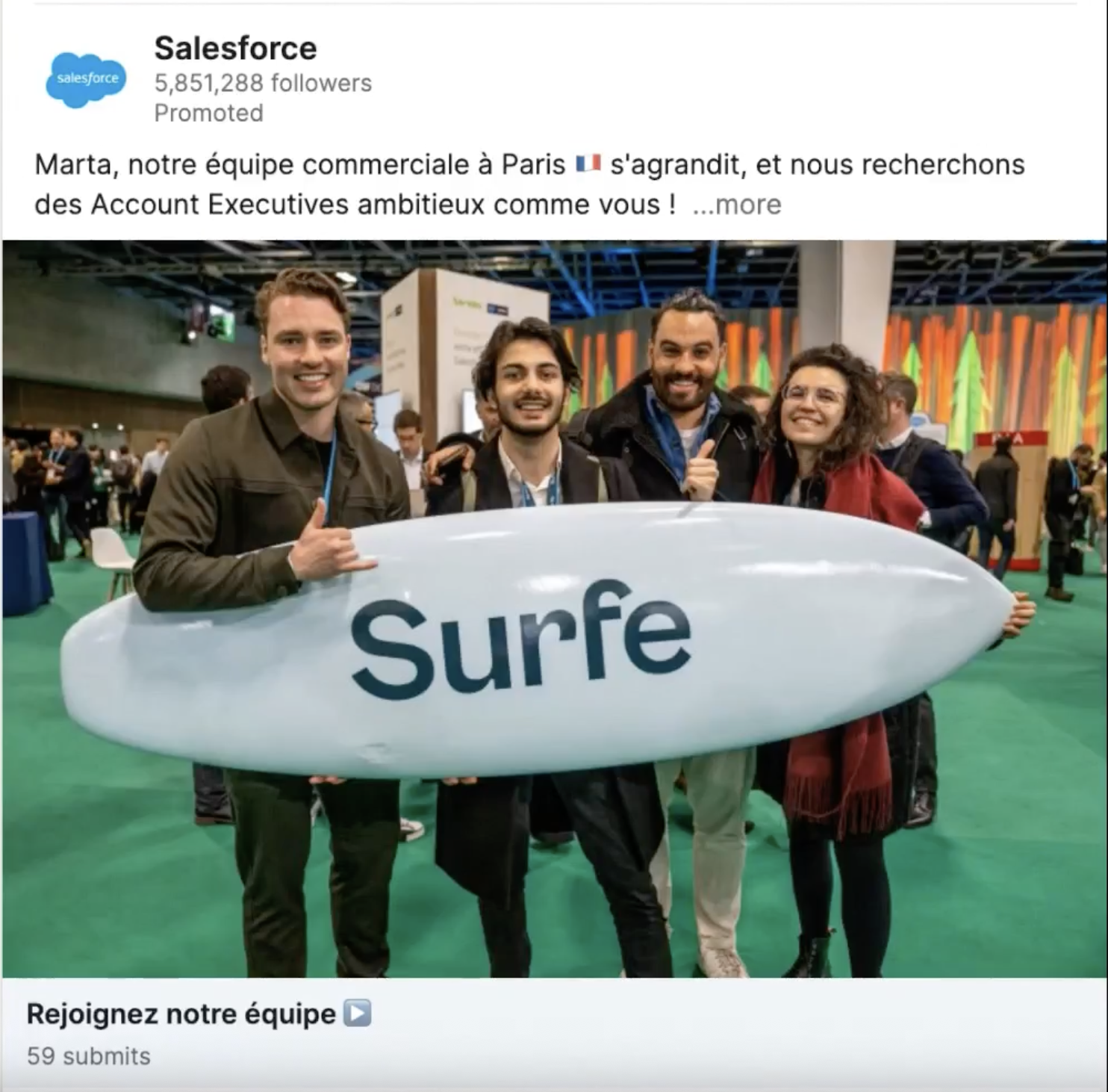Introduction
Most partner programs start by chasing big names and top-down buy-in. But when Marta El Bay joined Surfe as their first partnerships hire, she went in a different direction.
Instead of beginning with directors or senior leaders, she worked directly with ecosystem players and channel partners. The result was a thriving partner program and a standout strategic collaboration with Pipedrive.
In this session, Marta shared how she built the program from zero, why keeping it simple worked best, and how creativity (plus a surfboard) opened unexpected doors.
A Creative Approach to Partner Activation
Let’s talk surfboards. Literally.
When Surfe couldn’t afford a booth at a major SaaS event, Marta and her team got scrappy. They brought a surfboard branded with their logo and walked the event floor, creating conversations without spending €30K on sponsorship. The board became a photo op, caught the attention of Salesforce executives, and even showed up in LinkedIn ads weeks later.
It was a reminder that sometimes the simplest, most human gestures leave the biggest impressions. Partnership marketing doesn’t have to break the bank.

Building the Foundations: From 170 Partners to a Real Program
When Marta started at Surfe, they had 170 registered partners, but only 10 had ever generated revenue. Her first step was understanding why.
She dug into their partner data, identifying patterns among the successful ones, reaching out for feedback, and using those insights to define clear partner profiles. Marta relied on the MEDDIC framework, commonly used in sales, to qualify partner potential by exploring metrics, decision criteria, pain points, and champions.
Rather than building an overly complex system, she kept things simple and focused on three key partner types: content creators and influencers, agencies, and integration partners. This clarity laid the groundwork for everything that followed.
Turning Partnerships Into a Revenue Engine
Marta doesn’t see partnerships as a side channel. For her, they’re an interdepartmental revenue stream that connects sales, marketing, customer success, and product. At Surfe, she built her team to be “full-cycle” partnership managers, handling everything from acquisition to enablement and post-sale support.
That mindset created a structure where partner managers weren’t just forwarding leads. They actively participated in co-selling, customer onboarding, and long-term success planning.
To get internal buy-in, she focused on showing results: tracking influenced revenue, partner engagement, and impact by partner type. As she explained, presenting structure, strategy, and data is critical, especially when leadership is hesitant to invest.
Landing the Pipedrive Partnership Without Going Top-Down
One of the session’s most memorable insights was how Surfe landed a unique partnership with Pipedrive without reaching out to senior executives.
Instead of targeting the VP of Partnerships, Marta worked through Pipedrive’s existing ecosystem. She offered free access to Surfe’s platform to a few channel partners, asked for feedback, and let the product speak for itself.
Those partners loved it and started recommending Surfe in internal QBRs.
Eventually, a channel manager at Pipedrive reached out. He had heard about Surfe from three different partners and wanted to learn more. From there, the relationship grew organically. Internal teams adopted the tool, advocates emerged, and the collaboration evolved into a strategic partnership with integrated onboarding, product exposure, and co-selling support.
Final Takeaways
Start where the action is. Channel partners and ecosystem players are closer to the customer and often more open to innovation than executive stakeholders.
Keep it simple. Build partner profiles based on real data, avoid bloated tiers, and focus on what partners need to succeed.
Be data-driven. To gain buy-in, show the impact of partnerships with clear metrics, not just qualitative stories.
Partnership is a team sport. Build programs that cut across departments and empower your partner team to play multiple roles.
Creativity beats budget. Whether it’s a surfboard at a trade show or a smart referral strategy, small ideas can lead to big results.
Looking Ahead
Missed the session? Stay tuned for the full replay and more insights in our August recap.
This was our final Q&A before the summer break, but we’ll be back in September with Season 2. Until then, thank you for joining us and for helping us build better partnerships, one session at a time.
.png)

